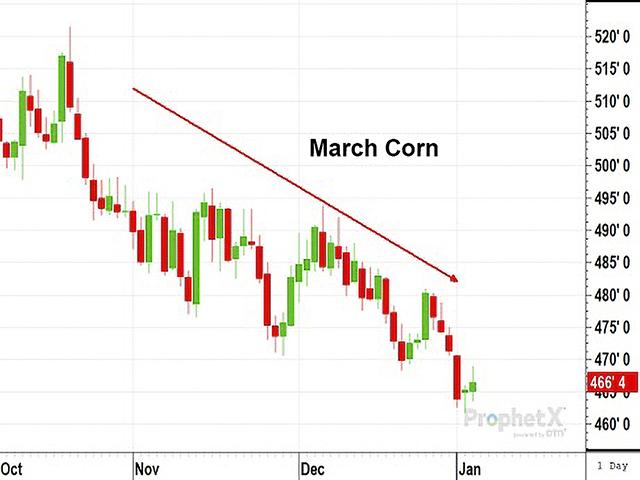Inside the Market
Make Room for Surprises in 2024
When Shakespeare penned the words "Now is the winter of our discontent made glorious summer by this sun of York," they were attributed to Richard, Duke of Gloucester, trying to convince himself that things were better now with his brother, King Edward IV, on the throne. Little did Shakespeare know, the phrase "winter of discontent" could also describe modern-day grain markets and market analysts, including this one. After several decades of working in and writing about grain markets, I can say the changing seasons not only affect crop prices, they also affect analysts' price outlooks. I suspect it is true again as we venture into 2024.
Winter price outlooks are especially bearish when preceded by a record harvest, as we had for corn in the fall of 2023. The universal formula for a bearish new-crop forecast is fairly simple. Fresh from experiencing harvest lows, analysts make shaky guesses about what demand will look like in the year ahead and start every new season with an expectation for trend-line yields, including South American seasons. Weather will eventually have the final say and may or may not agree with earlier estimates. But, analysts in winter, having no crystal ball, are stuck with trend-line yield estimates that cast a bearish tint on prices.
Even cash soybean prices trading below $13 at the end of 2023 are reflecting bearish expectations for 2024. In soybeans' case, there was no large harvest in 2023. USDA's estimate of a 4.13-billion-bushel crop in 2023 was the lowest in four years and puts 2023-24 U.S. soybean supplies on track for their tightest finish in eight years. Even in this more bullish situation for U.S. soybeans, the early anticipation of trend-line yields in South America is keeping a lid on soybean price outlooks. The way things are currently going, Argentina's bearish price influence may be correct, but a drier-than-normal rainy season in central and northeastern Brazil will likely force USDA to reduce its record-high production estimate of 161 million metric tons, or 5.92 billion bushels.
P[L1] D[0x0] M[300x250] OOP[F] ADUNIT[] T[]
There are also other bearish influences in winter. Price volatility often dries up for both corn and soybeans after harvest lows are made. For long stretches, watching and writing about daily markets can become an exercise in watching paint dry. Even though we intellectually know price volatility will likely pick up again in May as the reality of a new season begins, it's human to combine early bearish forecasts with inactive price behavior and reach bearish conclusions about where prices are headed in the year ahead. Somehow, we need to avoid that trap of certainty that winter doesn't deserve. We need to leave room for surprises.
I don't have a good answer for countering the foibles of being human, but it's helpful to remember, even in bearish years, markets have often been emotional enough to push corn and soybean prices roughly 18% above and below their one-year averages. Seasonally speaking, not only can the glorious sun of summer help corn and soybean prices trade higher in May and June, it sometimes shakes off the gloom of uninformed winter price outlooks.
Best wishes in 2024.
**
-- Read Todd's blog at https://about.dtnpf.com/…
-- You may email Todd at todd.hultman@dtn.com, or call 402-255-8489.
[PF_0224]
(c) Copyright 2024 DTN, LLC. All rights reserved.




